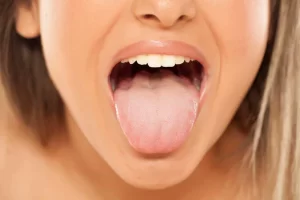Before commenting on its culinary uses, we will talk about another type of use of our protagonist. In many corners of the world, its hard and resistant shell is used for very diverse purposes related to local cultures. Let’s see some examples:
Once they have been emptied and dried on their own, they are an excellent container to store water, a kind of natural canteen. Even in parts of South America, it is used to store mate.
It has a special symbolism for pilgrims on the Camino de Santiago, where this humble fruit contained the water or wine that gave the pilgrim comfort.
In regions of sub-Saharan Africa, it is used as a percussion musical instrument, where it is known as calabash or shekere. It is like a kind of large rattle, a net to which small objects are attached, surrounds the pumpkin, which, when shaken, emits a percussive sound.
In many English-speaking countries, it is used for the feast of Halloween, the Anglo-Saxon equivalent of the feast of All Saints. Thus it is used decoratively, cut out, imitating the skull faces of the deceased.
In Mexico, it is used similarly on its famous Day of the Dead.How to cook pumpkin?
We will discuss some of its uses, starting with the simplest:
The simplest thing to do is prepare it for creams or purees. Unlike the creams of its cousins, zucchini, there is no bitterness but a somewhat sweet and creamy flavor. This has the virtue of being very digestive as a prelude to a heavier autumn main dish, such as roast meat with chestnuts. In this case, you have to take special care to avoid an accident while peeling your tough skin. If we previously cut it into several large pieces, it will be easier to manipulate than if we peel them in their entirety. We must use a small and sharp knife or a peeler also affiliated. Then you have to divide it into small cubes, which are easy to dissolve with the blender. To cook them and complement their somewhat bland flavor, we can do it in a whole milk base.
The second use is as an ingredient in stews, soups, or stews. Thus they can be added as a substitute or complement to potatoes, in a plate of legumes or other types of stews.
Well, known is the confectionery use of the Cidra variety. Taking advantage of the filamentous texture and the sweet taste of the pulp, we obtain a healthy ingredient to make biscuits, cakes, cakes, or cookies.
We will also make a mention of the use of its seeds. In western countries, where diets are generally quite rich in protein, its use does not make much sense. But in some other regions, they are used for their nutritional power since they are a rich source of vegetable protein.
Citron, confectionery, or angel hair. Sometimes the term citron is used for another variety slightly different from the confectionery, but in Spain, it is usual to use the three names. It is a pumpkin whose almost exclusive use is dedicated to making angel hair and other confectionery or delightful preparations. It is cylindrical, expansive, juicy, and stringy, with great sweetness and a dense texture. It has green skin dotted with whitish spots and grooves.
Spaghetti. Named for its peculiar pulp, very filamentous, difficult to cut or crush to make creams or the like. The typical way of cooking it in whole or in halves, to get that pulp in the form of thick filaments, with the appearance of noodles or spaghetti. It is cylindrical and flat on the outside, with an ashen yellowish color on both the skin and the pulp.Bonasera or patisson. Also called "Peter Pan" for the curious shape of a hat or beret it presents. It is small, very flat, and flattened, usually white, although other varieties have green or orange colors. It is more appreciated for ornamental than culinary purposes, although it is just as valid as the violin for making creams, stews, roasts, or gratins. Being a traditional summer crop, its skin is thinner and can be left unpeeled in the youngest and smallest specimens.
Butternut or Musquée de Provence. It is believed native to Mexico and Peru and more appreciated in Europe also for decorative purposes and rounded and flat, dark green with pale lines that can mature to bronze tones. The meat is orange and somewhat reddish.
Vinatera or pilgrim gourd. Also known as a white Valencian gourd, very popular for centuries as an instrument or tool for various uses, such as a canteen, once emptied, dried, and cured. The pulp is white and tender, more reminiscent of a zucchini.Nutritional properties and benefits
In general, pumpkin shares the same properties as cucurbit vegetables, standing out for being a food with a low caloric content of around 32 kcal per 100 g of edible portion, according to the Spanish Food Composition Database. Although the exact figure may vary depending on the type of pumpkin or its point of ripeness, this is a product with a low caloric density that is very satiating thanks to its water, fiber, and complex carbohydrates.
It has hardly any fat, is free of cholesterol, and provides approximately 1.2 g of vegetable protein per 100 g. It stands out above all for its contribution of carotenes and vitamin A or retinol and folates and essential minerals, especially potassium and phosphorus, also with a small contribution of calcium, which is less remarkable.
It is, therefore, a portion of nutritionally vibrant food to incorporate into the diet of all ages, highly recommended for weight loss or weight control diets, which increases satiety and helps maintain good intestinal transit. Its consumption is associated with beneficial effects on the skin, sight, and the prevention and treatment of diabetes, always within a balanced diet. Its vitamins have antioxidant action and can help prevent cardiovascular diseases or certain types of cancer, like all foods rich in carotenes.

















Add Comment